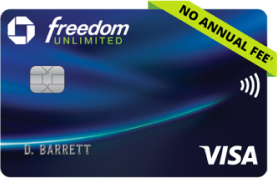![]()
![]()
![]()
![]()
Affordable Loan Options for Vehicle Acquisition
Vehicle Acquisition loans are essential financial tools for those looking to purchase a new or used car.
In this article, we will explore the various aspects of these loans, including how they work, the differences between lenders such as banks and credit unions, and the important factors to consider when choosing between direct lending and dealership financing.
Additionally, we will discuss repayment terms, interest rates, and the potential benefits of using the vehicle itself as collateral to secure financing.
Understanding these elements will empower you to make informed decisions in your vehicle purchase journey.
Fundamentals of Vehicle Purchase Loans
A vehicle purchase loan is a financial arrangement that allows individuals to buy a new or used car without paying the full amount upfront.
Instead, a lender provides the funds and the buyer agrees to repay them over time in fixed installments.
Typically, the vehicle itself secures the loan, meaning if the borrower fails to repay, the lender can repossess the car.
Understanding how this works is essential, especially since factors like interest rates, loan duration, and credit score directly impact the total cost of the loan.
Most lenders offer either direct lending through a bank or credit union, or dealership financing.
Reviewing all terms before committing helps avoid unexpected costs and ensures the deal aligns with your budget.
For deeper clarity and options, refer to Bank of America’s guide to auto loans.
- Loan principal: The total amount you borrow from the lender
- Interest rate: The cost of borrowing money, calculated as a percentage of the principal
- Loan term: The length of time over which the loan is repaid
- Monthly payments: The regular amounts paid that include both principal and interest
Banks Versus Credit Unions
Auto loans from financial institutions vary significantly depending on whether you choose a traditional bank or a credit union.
Banks commonly offer loans with more strict eligibility criteria and slightly higher interest rates.
However, they may provide quicker approval processes and broader accessibility without requiring membership requirements.
On the other hand, credit unions tend to focus more on community-based service, leading to lower interest rates and a more personalized approach.
In fact, many borrowers prefer credit unions for their exceptional customer support and flexibility in payments, especially when seeking financing for used vehicles.
| Interest Rates | Loan Terms | Eligibility | |
|---|---|---|---|
| Banks | Typically higher, varies by credit profile | Moderate flexibility, often tied to promotions | Broad access, no membership requirements |
| Credit Unions | Lower average rates, member-focused | More flexible and tailored to members | Requires credit union membership |
While banks may appeal to those seeking speed and accessibility, borrowers aiming to save in the long term might prefer the cost-effective and service-oriented offerings of credit unions.
According to a recent analysis by Investopedia, credit unions often provide consistently better loan deals, particularly for users with average or below-average credit.
This difference makes a substantial impact across the full repayment term, especially when borrowing large amounts.
Ultimately, comparing both based on your financial goals ensures you choose the most beneficial lending partner.
Direct Lending or Dealership Financing
Choosing between direct lending and dealership financing depends heavily on your priorities.
Direct lending, typically from a bank or credit union, often offers lower interest rates and more transparency.
With this option, you can secure financing before visiting the dealership, giving you increased bargaining power.
Total loan cost tends to be reduced, as there’s less likelihood of markups found in dealer-arranged loans.
However, it may require more time and effort to apply separately and compare offers.
On the other hand, dealership financing provides convenience, since you can choose your car and arrange funding in one visit.
This method can be especially useful if your credit score is non-optimal, as dealers sometimes have access to special lending programs.
Still, dealers may mark up interest rates for profit, leading to a higher total loan cost.
According to Experian’s auto loan comparison, understanding how dealers profit from indirect financing is crucial before signing a contract.
Interest and Repayment Terms
Loan term and interest structure significantly shape how much you pay for a car monthly—and in total.
A shorter repayment period usually means higher monthly payments but less interest paid over time.
In contrast, longer terms offer lower monthly payments but can lead to significantly higher cumulative costs due to the extended interest accumulation.
The annual percentage rate directly impacts both the monthly and total amounts since it dictates how much interest you’ll pay over the loan’s life.
Understanding these dynamics helps buyers choose the most cost-effective repayment strategy.
- 36 months – fixed annual percentage rate, less interest overall
- 48 months – balance between payment size and interest cost
- 60 months – lower monthly cost, more interest over time
- 72+ months – risk of negative equity despite affordability
For example, financing a $20,000 car with a 60-month term and a annual percentage rate of 6% would result in a monthly payment of approximately $386.66. Over the loan term, you would pay around $3,199.60 in interest, bringing the total cost of the vehicle to $23,199.60. Tools like this Capital One Auto Loan Estimator can help borrowers better understand how changing these factors affects repayment.
Collateral and Default Consequences
When financing the purchase of a car through a secured auto loan, the vehicle itself acts as the collateral.
This means that the lender holds a legal claim to the vehicle until the loan is fully repaid.
If the borrower defaults on payments, the lender uses the car’s value as a safeguard against losses.
According to Lantern by SoFi, by securing the loan with the vehicle, lenders lower their financial risk and may offer better rates to borrowers.
However, missing payments triggers a risk that goes far beyond credit score damage.
Imagine a scenario where a borrower abruptly loses their job and begins missing monthly payments.
After sufficient delinquency and failed communication, the lender initiates repossession, legally reclaiming the vehicle without court involvement in most states.
This action not only strips the borrower of reliable transportation but also may leave an unpaid loan balance if the car’s auction value doesn’t cover the debt.
As described by Truist’s secured loan guide, using tangible assets as collateral introduces significant consequences upon default, reinforcing why consistent loan repayment is critically important.
In conclusion, navigating the world of Vehicle Acquisition loans can be complex, but understanding your options will help you secure the best financing for your needs.
By considering lenders, terms, and collateral, you can make a smart investment in your next vehicle.


